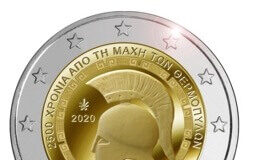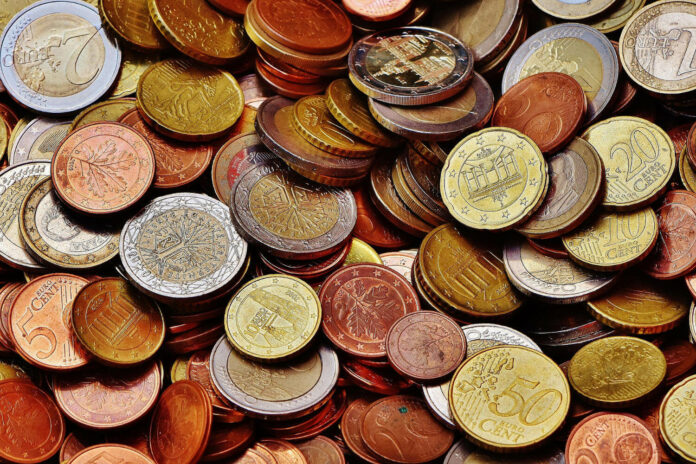
What’s currently happening on online sales platforms regarding euro error coins is just crazy. In recent years, more and more collectors seem to have become interested in the subject of error coins – which is actually something good. But beware! If you don’t have some basic knowledge, you’ll quickly fall into the traps of dubious charlatans. After all, these offers usually do not only target experienced collectors but aim at luring ignorant newcomers into their traps. And in many cases, there are thousands of euros at stake! Unscrupulous sellers are charging astronomical prices for their coins. But these pieces aren’t error coins to begin with. In most cases, the coins are fake, and an imaginative story is supposed to make you buy them anyway. I’ve been observing this issue for quite a while now. Therefore, I want to take a close look at some “old wives’ tales” from such offers in this article.
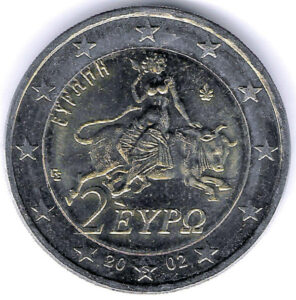
All That Glitters Is Not Gold
It’s particularly frustrating when offers declare a specific detail that is a genuine part of the motif to be a feature of an error coin. The best example for this are the first Greek cent and euro pieces of 2002.
When introducing the euro, it turned out that the coins minted by the Greek National Mint in Halandri (Anthemion) weren’t enough. Therefore, some denominations were also minted in France, Finland and Spain. That’s how the “enigmatic” letters in the star right next to the year 2002 came about. “F” is for France, “E” for Spain and “S” for Finland.
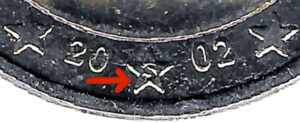
This phenomenon isn’t uncommon at all. There are several other countries in the eurozone whose circulation coins are produced by foreign mints, and this is usually indicated on the coin. Some years of the Republic of Malta feature a small “F” for the mint in France (Monnaie de Paris, Pessac) in the lowest star on the obverse. That’s absolutely fine and even intentional! The Republic of San Marino doesn’t have its own mint, which is why all circulation coins are produced by the Italian mint in Rome (IPZS). Therefore, they feature an “R” just like Italian pieces do. The same applies to coins from Vatican City. The very first (2007) and some later years of Slovenian euro coins features an “Fi”, which refers to the Finnish mint.

1999 Euro Coins? Do They Even Exist?
Yes, they do. Although the euro wasn’t introduced until 2002, pieces of some euro countries feature the year of the production of the coins. Thus, you can see the year 1999, 2000 or 2001 on them. And that is anything but rare. Such pieces are from Belgium, Finland, France, the Netherlands or Spain. This is by no means a minting error. Although Germany also produced coins prior to the introduction of the euro, it was decided to only show the year of issue (2002) on the coins. So there are no German euro coins of 1999, 2000 or 2001. If you know these facts, you will hardly fall for this offer:
“Attention! I offer a 2-euro coin from France of 1999! RARE as it was minted in 1999!!! The euro was only introduced in 2002, which is why the piece is a great rarity and great asset as it is probably unique. Private sale, no return policy, no warranty, no refund. Shipping possible.”
The allegedly rare 2-euro coin was supposed to cost 5,000 euros. A similar offer of a 1-euro coin from Belgium was “only” priced at 1,000 euros.
Newcomers who fall for such offers unfortunately pay way too much to learn their lesson. After all, the pieces are only worth 1 resp. 2 euros.
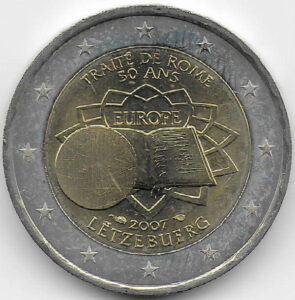
Special Error Coins from Luxembourg
Those who don’t know what’s behind this story will certainly be amazed by this offer. The Grand Duchy of Luxembourg was among the countries who issued the 2007 commemorative coin “50th anniversary of the Treaty of Rome”. The obverse of all euro countries depicts the open treaty and, in the background, the special pavement design of Capitol Square in Rome. The legend is written in the respective national language. Therefore, all obverses should look the same. However, there’s something special about coins from Luxembourg. On the left side, a small sphere stands out. But what is it? And why is it there? Let’s first look at an offer of such a piece, advertising it as a particularly rare error coin:
“2-Euro 50th Anniversary of the Treaty of Rome, great error coin. On the motif is a sphere that shouldn’t be there! Incredibly rare specimen, a unique error coin, a truly unique opportunity. Only €2,500.”
In fact, the sphere was placed there on purpose. It’s kind of a latent image. If you hold the coin in your hand and tilt it sideways, it either shows the complete motif or the side portrait of Grand Duke Henri. And that’s exactly what the issuer intended. So the piece isn’t an error coin at all. The coinage laws of Luxembourg require that the ruling Grand Duke be depicted on all coins. Therefore, a compromise had to be made regarding the coin design – and they opted for a latent image. The latent image also became an integral part of Luxembourg’s obverse design of the following joint issues of the euro zone.
2,900 Euros for What’s Advertised as a Wrong-Planchet Error
The seller didn’t use a lot of words to describe his “special” piece:
“Error coin 2-euro on 1-cent planchet! Wrong planchet! The piece is magnetic and identical to a 1-cent piece (euro cent).”
He also added some pictures to the offer. Experts will probably notice at first glance that something’s wrong here, grin to themselves and continue scrolling. But let’s have a close look at the piece on offer. After all, a price of 3,000 euros for an alleged error coin is quite a lot. Did they really use a wrong planchet to mint the coin? Or is this just the centre of a 2-euro piece and thus no error coin? The seller tells us that the piece has a weight of 2.27 grams. However, a 1-cent piece weighs 2.30 grams. Granted, that’s almost the same and there are certain tolerances regarding the weight of a coin. But let’s investigate further.
Although the piece can be attracted by a magnet just like a 1-cent coin, it does not have a rim! Thus, its edge wasn’t “upset”, as a minting engineer would say. So the seller’s theory of the coin being a wrong-planchet error starts falling apart. Another reason for this are the missing parts of the design. Although the edge is smooth just like that of a 1-cent piece, it has scratches. Thus, the case is solved: this is no error coin and no wrong planchet was used. But what about the copper colour? Well, if you treat the centre of a 2-euro coin in a certain way, it will get the copper lustre of a 1-cent piece. That’s absolutely possible.
Conclusion: the piece on offer was removed from a 2-euro coin (it is the centre of it). Since this isn’t easy to do without heavy tools, it is usually punched out by force. This causes some deep nicks and other marks on the edge. Although you can try to hide them by grinding and polishing the piece, they will still be visible. So the coin isn’t an error piece – it was manipulated to fool collectors! So always be alert and think logically when making a purchase.
I don’t want to end our journey through error coin offers without presenting one of the most impressive online offers. Of course, this one’s a fake, too. And it costs much, very much. It’s a normal 2-euro circulation coin from Germany. The word “UND” of the edge lettering was made unrecognizable by means of a punch. It’s clear to see that a sharp object was used to get the job done. The traces of clamping it in a vice are also still visible. The seller, however, claims to be offering a very rare error coin because the word “UND” wasn’t minted onto the coin. Well, well! A very bold statement, and there is no corresponding evidence. The price was also quite incredible. The piece cost an impressive amount of 10,000,000 euros. 10 million euros! I think that, at this price, the seller himself will enjoy the coin for himself for a long time to come.
I hope you always approach any purchase with a sufficient portion of scepticism, yours numiscontrol.
Find out more about our author numiscontrol, alias Reiner Graff, in our Who’s Who.
The collecting expert made it his mission to introduce beginners to the world of coin collecting – here you can read his series “Coin Care in Simple Terms”.
Do you now want to know how actual rarities and error coins from euro countries look like? numiscontrol has already dealt with the 2-euro coins of various countries. Here you can find, for example, his articles on coins from
- Slovakia and
And here you can find his series on rare 2 euro pieces from Germany and on the joint EU issues (in German).




